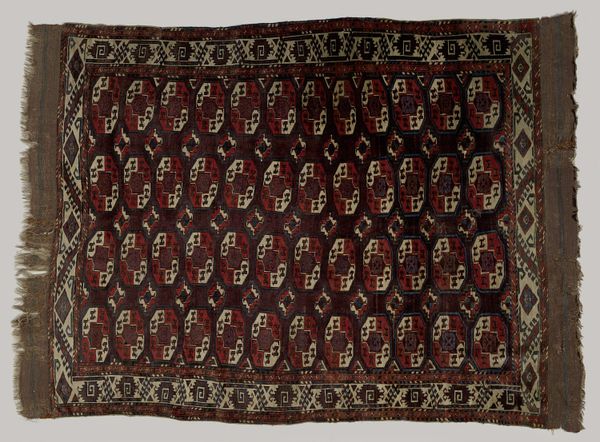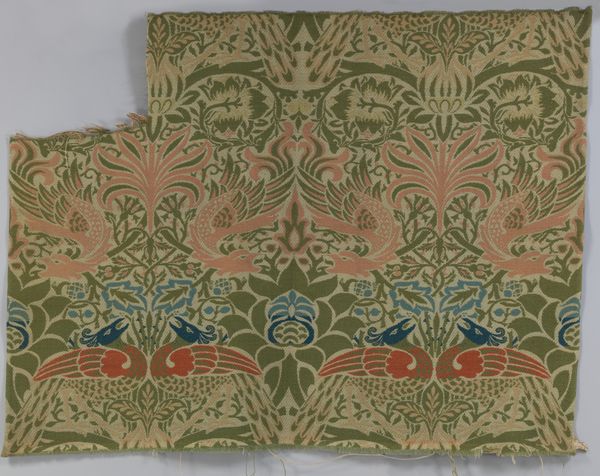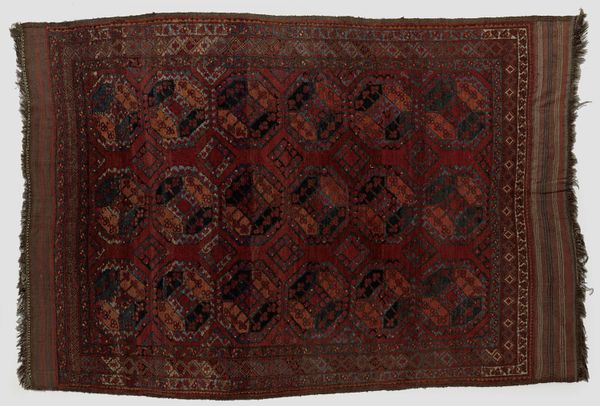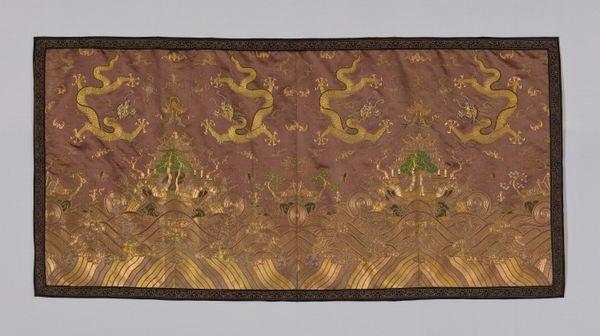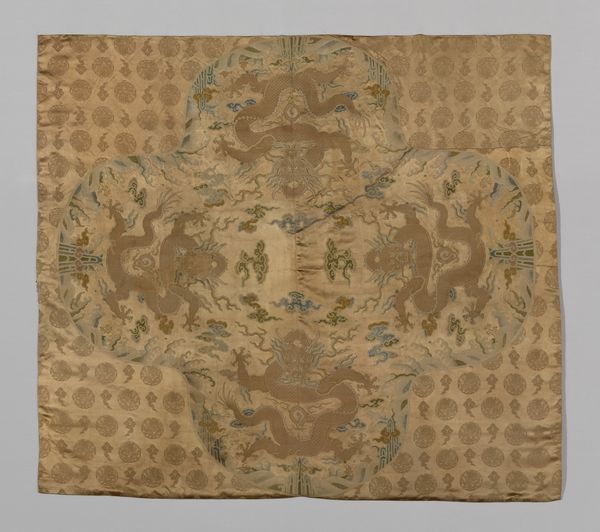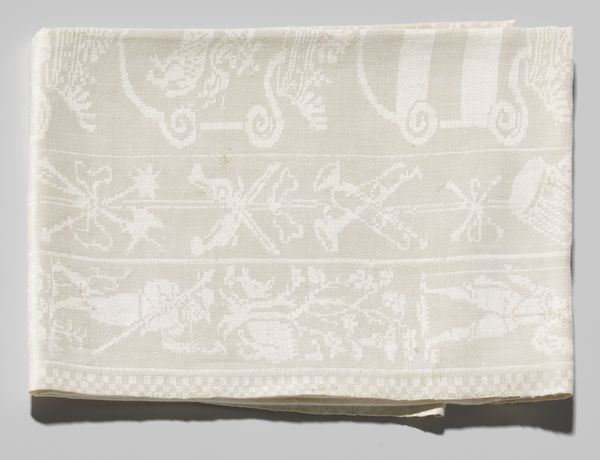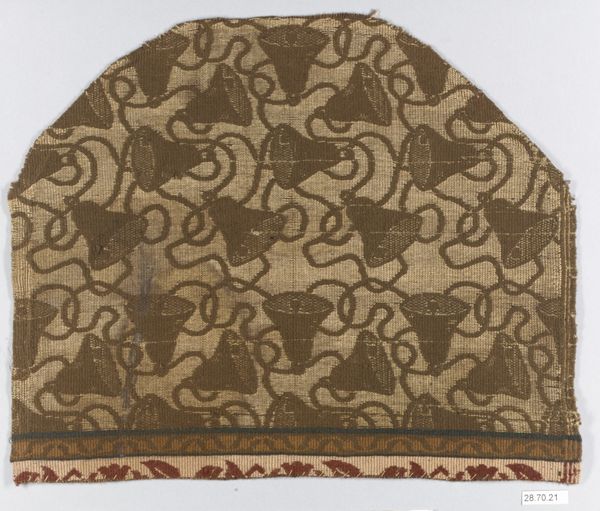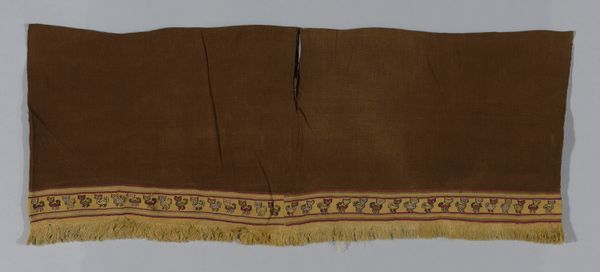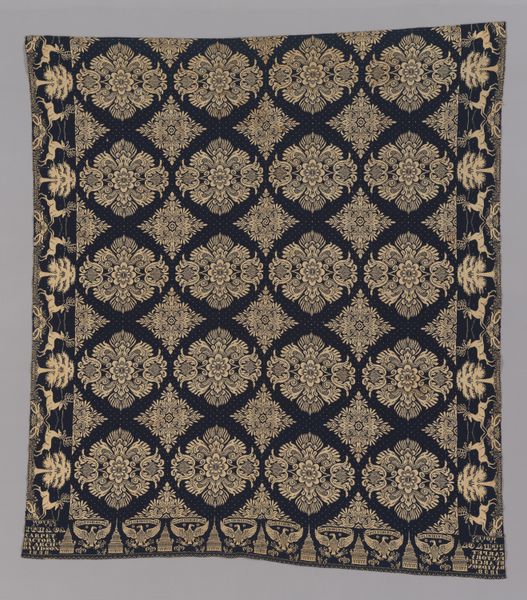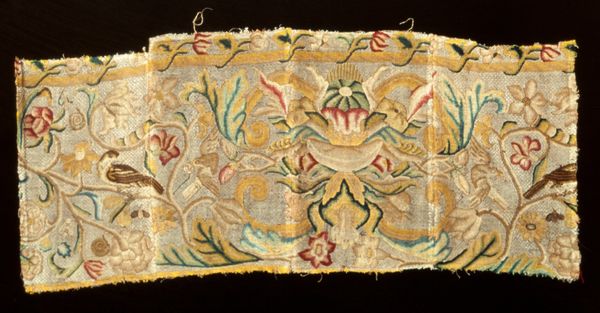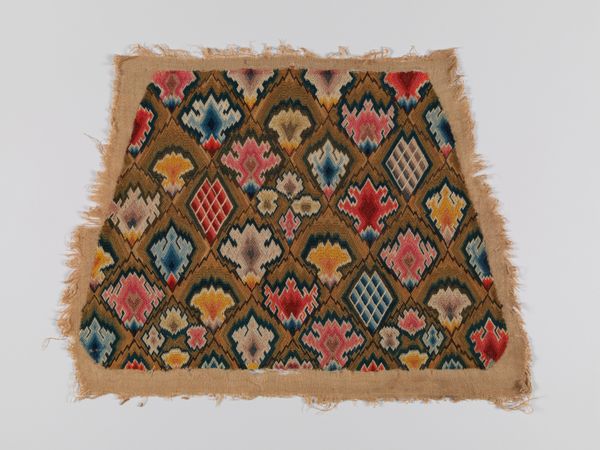
Voetkussen van geknoopte wol met een patroon van vier libellen in fletsgroen, geel, paars en bruin. Ontwerp Th.W. Nieuwenhuis. c. 1910
0:00
0:00
weaving, textile
#
organic
#
arts-&-crafts-movement
#
pattern
#
weaving
#
landscape
#
textile
#
organic pattern
#
decorative-art
Dimensions: height 53 cm, depth 8 cm, width 55 cm
Copyright: Rijks Museum: Open Domain
Curator: A touch of domestic artistry awaits us in this gallery. Here is a wool footstool, or "voetkussen," designed around 1910 by Th.W. Nieuwenhuis. Editor: It feels quite muted, almost earthy, even with the decorative fringe. The colour palette, the olive greens, faded purples...it suggests a certain Arts and Crafts sensibility. Is it the texture, maybe, giving me that impression? Curator: Absolutely. Nieuwenhuis was very much immersed in the Arts and Crafts Movement. What you're observing are precisely its hallmarks. Consider the emphasis on handcraft, the organic pattern itself. This design—of stylized dragonflies—it signifies more than just aesthetic appeal. Editor: More, how so? Curator: Dragonflies, you see, across various cultures symbolize transformation, adaptability. Their life cycle mirrors a process of metamorphosis—a powerful motif during a period of intense social and technological change. In the early 20th century, embracing the dragonfly wasn’t simply a decorative choice. Editor: So, in essence, by choosing the dragonfly motif, Nieuwenhuis was perhaps commenting on the societal changes of the era through symbolism embedded within an otherwise functional item? The muted tones almost grounding these grander ideals in something practical and familiar? Curator: Precisely. This isn’t merely an object; it's an expression of cultural sentiment. Its organic patterns reflect an interconnectedness with the natural world but filtered through the symbolic power we've attributed to it. Editor: The wool itself—the materiality seems to be as essential as the design. There’s an unpretentious quality, a rejection of industrial polish, in favour of this textile-based medium. It grounds the work even more firmly. Curator: It speaks to the core values of the Arts and Crafts movement, the value and integrity of materials and the rejection of mass production in favour of the hand made. A perfect emblem of Nieuwenhuis's aesthetic and philosophical positions. Editor: Well, seeing beyond just surface decoration certainly does add layers of understanding. What initially struck me as just a cozy object now feels laden with intention. Curator: Indeed, looking closely reveals not just a footstool but a statement of values.
Comments
No comments
Be the first to comment and join the conversation on the ultimate creative platform.
